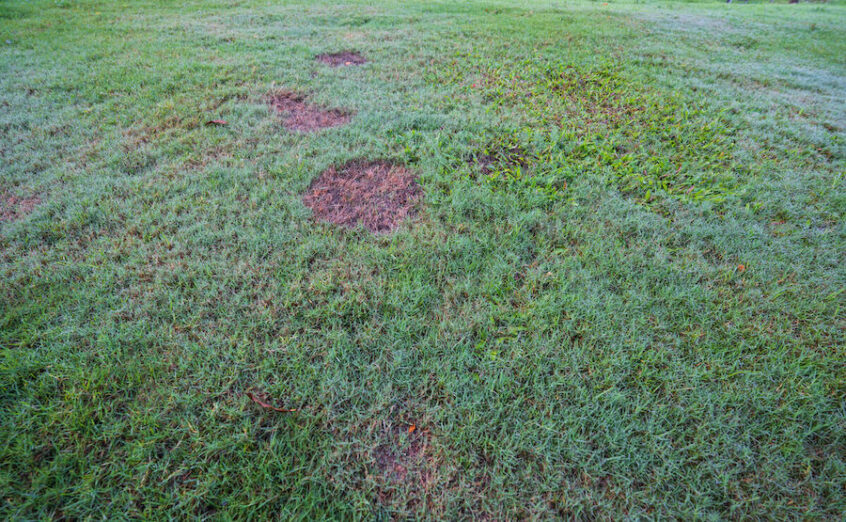Maintaining a beautiful, lush lawn requires regular care and attention, including watering, fertilizing, and mowing. However, even with proper maintenance, your lawn may be susceptible to various fungal diseases. Lawn grass fungus can cause unsightly brown patches, thinning grass, and even death of the grass blades. In this article, we will discuss how to identify some of the most common types of lawn fungus, as well as a few different ways to treat them!
How to Identify Lawn Fungus
The first step in treating lawn grass fungus is identifying the specific type of fungus affecting your lawn. Here are some of the most common types of lawn grass fungus and how to identify them:
Brown Patch
Brown patch is a common lawn fungus that usually occurs in the summer months. It typically starts as circular brown patches that range in size from a few inches to several feet in diameter. The grass blades in the affected area will turn brown, and the patches may have a yellow “halo” around the outside.
Dollar Spot
Dollar spot is another common lawn fungus that usually appears in the late spring or early fall. It creates small, circular patches of dead grass that are about the size of a silver dollar. The affected grass may have tan or straw-colored spots on the blades, and the patches may merge together over time.
Rust
Rust is a lawn fungus that creates a reddish-brown or orange powder on the grass blades. It can occur in any season, but it’s most common in the fall when the weather is cool and damp. The grass blades may also be thin and weak, and the affected areas may have a yellowish tint.
How to Treat Lawn Grass Fungus
Once you have identified the type of lawn grass fungus affecting your lawn, you can begin treating it. Here are some of the most effective ways to treat lawn grass fungus:
Proper Lawn Maintenance
Proper lawn maintenance is a great preventative strategy. Preventative lawn care is always preferable to reactive lawn care. Make sure to mow your lawn regularly and at the correct height, water your lawn deeply but infrequently, and fertilize your lawn appropriately for your region and grass type. Also, avoid watering your lawn at night, as this can create a damp environment that is conducive to fungal growth. Overwatering in general can be a major contributor to the growth of lawn fungus. Don’t know if you’re overwatering your lawn or not? Check out our post, How Much Water is TOO Much? Know the Signs of Overwatering for the most common signs that your lawn is getting too much water.
Fungicide
Fungicides are chemicals that are designed to kill or prevent the growth of fungi. They come in various forms, including liquids, granules, and sprays. To use a fungicide, you’ll need to follow the instructions carefully and apply it to the affected areas of your lawn. Fungicides work best when applied before the fungus appears, so be sure to apply them preventively if you live in an area where lawn grass fungus is common. If you’re treating existing lawn fungus, check the product label and make sure that your lawn fungus variety is listed.
Aerate Your Lawn
Aerating your lawn can help improve drainage and air circulation, which can prevent the growth of lawn grass fungus. You can rent an aerator from a lawn care store or hire a professional lawn care service to do it for you. Check out our previous post, What is Lawn Aeration, for more information on how, when, and why to aerate your lawn.
Remove Infected Grass
If the fungus has already caused significant damage to your lawn, you may need to remove the infected grass and replant the area. This is a more extreme solution, but it can be effective if the fungus has caused widespread damage. If you end up removing your grass, treat the dirt below with a fungicide before laying down new seeds or sod. This will prevent you from having to repeat the process of battling lawn fungus!
Conclusion
Lawn fungus can be frustrating, unsightly, and a threat to your lawn’s overall health. Thankfully, it’s not impossible to treat. By identifying the specific type of fungus affecting your lawn and taking appropriate steps to remove it, you can restore your lawn to its former health and beauty.
